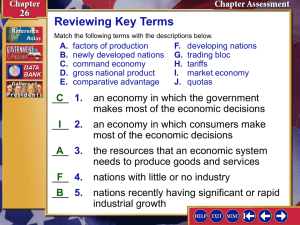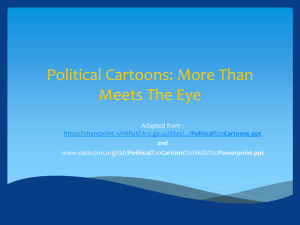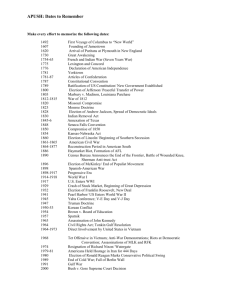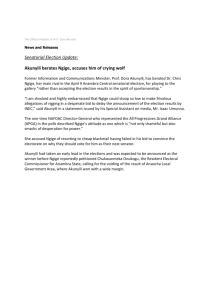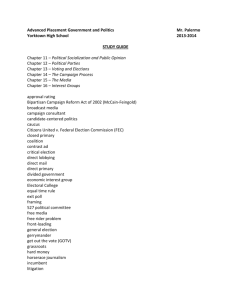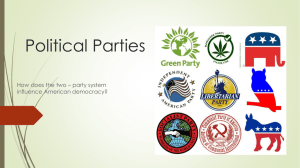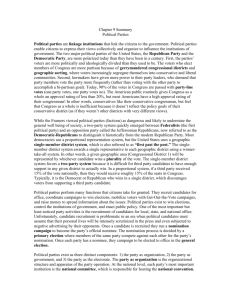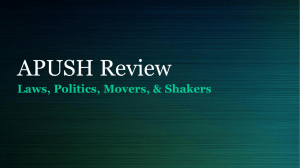5 Political Parties
advertisement
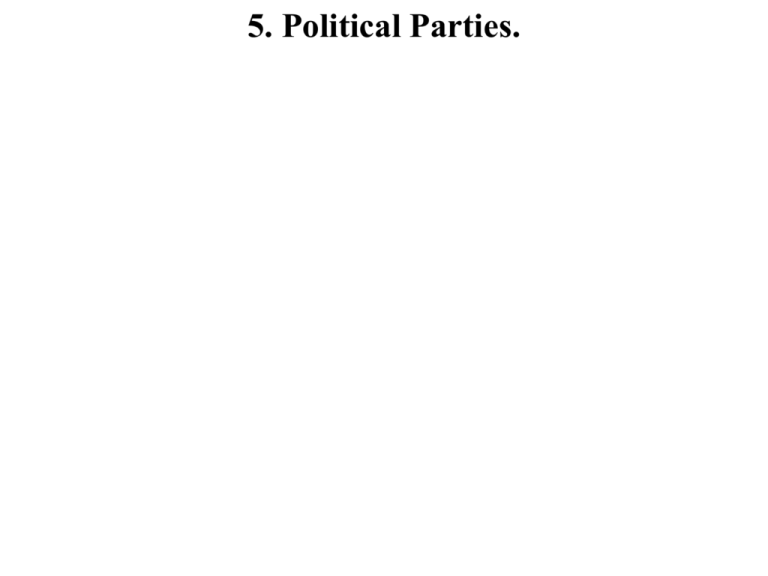
5. Political Parties. Parties and What They Do. The Two-Party System. The Two-Party System in American History. The Minor Parties. Party Organization. a group of persons who seek to control government through the winning of elections and the holding of public offices Republican Democratic strong support of their party and its policy stands the party that controls the executive branch of government one of the many political parties without wide voter support in this country contests in which only one candidate is elected to each office on the ballet largest number of votes cast for the officer two major parties find common ground and work together here consisting of several distinct cultures and groups a general agreement among various groups several major and many lesser parties exist temporary alliance of several groups who come together to form a working majority and so to control a government “no party” system current office holder conflicting groups people eligible to vote a devotion to the interests of a particular region based on a particular set of beliefs focus on only one public-policy matter rooted in periods of economic discontent those that have split away from one of the major parties a unit into which cities are often divided for the election of city council members smallest unit of election administration voting for candidates of different parties for different offices at the same election Campaign Fundraiser. The Election Process. Voices on Government Interpreting Political Cartoons. Democrat and then Republican. Multi-Party System. Dictator Joseph Stalin. Political Party Contacts. Perspectives? Interpreting Political Cartoons. Four Eras of Political Parties. Four Eras of Political Parties. Democratic vs Repbulican. Four Types of Minor Parties. The 1912 Presidential Election. Minor Parties, 1880-2004. Voting Leadership. Local Party Organization. Direct Access. Interpreting Political Cartoons. Political Party Identification, 1964-2004. Analyzing Political Cartoons.


